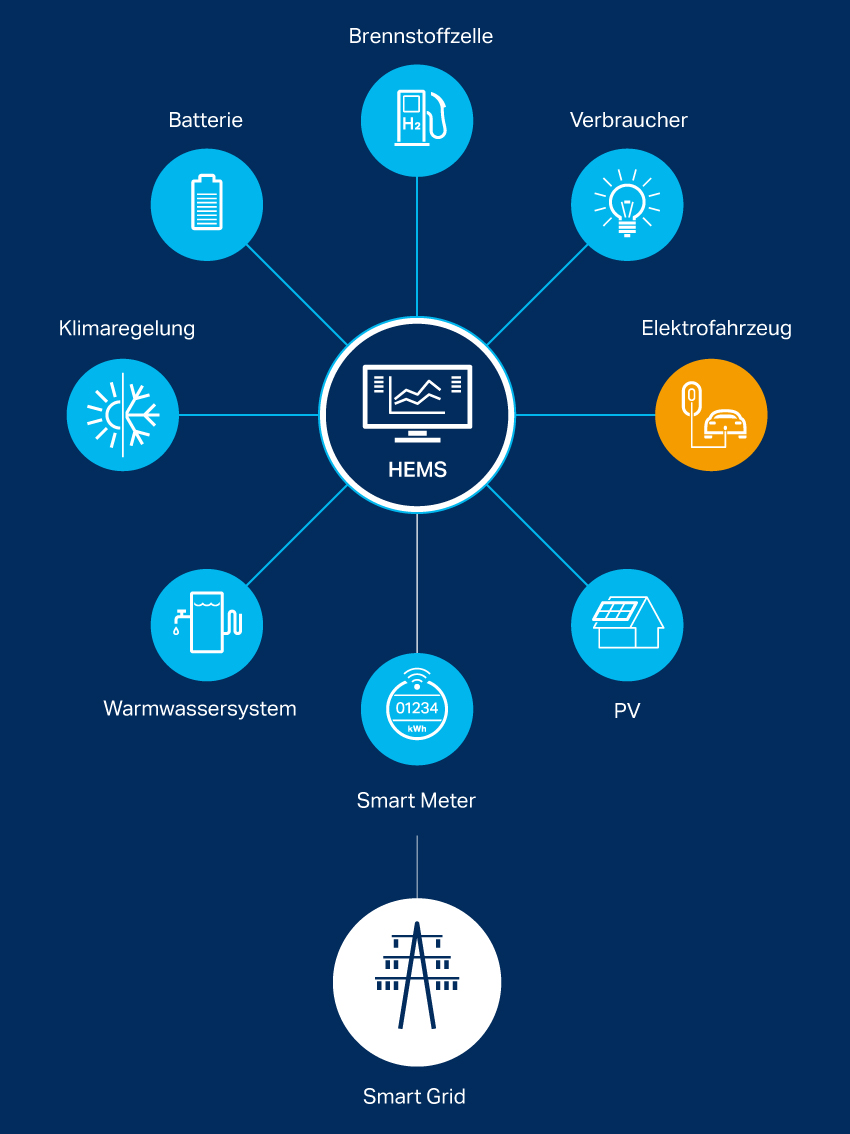The Perfect Symbiosis – E-cars as power storage devices at home
The idea is simple and forward-looking: Why not use parked electric cars as a storage facility for excess green electricity and thus compensate for fluctuations in the power grid? Efficient storage technologies for solar and wind energy are still rare. However, with the continuously growing number of e-vehicles, a large number of batteries are coming into circulation– a great potential for energy management in the home, for example, if this storage capacity can be used intelligently. With bidirectional charging technology, electricity can flow in both directions between home and car. IAV is developing the communications software relevant to this– thus creating an important lever for the success of the change in energy policy.


Battery electric vehicles can also be integrated into the HEMS, the key technology here being bidirectional charging: This not only enables electric cars to draw power from the grid at times when general electricity demand is lower, but also to feed it back into the grid via a charging point during phases of particularly high demand for electrical energy. Intelligent software enables the automated control of charging and discharging processes. The holistic integration of e-vehicles into the charging infrastructure and energy system is currently being researched in various projects, including by IAV, and the legal and regulatory framework is being evaluated.
As part of the “Bidirectional Charging Management – BDL” research project, companies and institutions from business and science are developing technology and system solutions in the field of energy and charging management at the Forschungsstelle für Energiewirtschaft e. V. in Munich and analyzing possible use cases. As a technology leader in future-relevant drive systems, IAV has a deep insight into the development of fully and partially electric vehicles and supports the joint project, which is scheduled to run for three years until April 2022 and is funded by the German government.
As an engineering specialist, IAV develops and tests the communication protocols between the electric car, charging infrastructure and power grid, thus creating the conditions for controlled charging. The individual needs of the consumers and the availability of electrical energy are coordinated with each other with the help of intelligent tariff offers and appropriate scheduling of the charging processes. Numerous current solutions for HEMS work with a proprietary communication system into which devices from other manufacturers often cannot be integrated. IAV develops communication modules for all international standards, thus creating the basis for competitive and future-proof solutions for so-called “smart charging.”
«In theory, e-vehicles could be connected not only to the HEMS but also to the public power grid and thus contribute to general supply security.»
— Senior Technical Consultant for infrastructure systems in the field of e-mobility at IAV
Regulatory changes must therefore be made in parallel with technical implementation.
“E-cars have great potential to cover the two central use cases – mobility and stabilizing local load management in the home,” says Willrett. “They are predestined to secure the electricity grid and provide meaningful support for the change in energy policy.”
The article was published in automotion 03/2020, the automotive engineering magazine of IAV. Here you can order the automotion free of charge.
